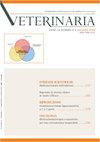Veterinary Nuclear Medicine: A Look into the Future
Q4 Veterinary
引用次数: 2
Abstract
The use of nuclear energy in veterinary medicine has been increasing over the last two decades. It mirrors the use in human health, but lags behind significantly. It is thought that animals are capable of undergoing almost any diagnostic or therapeutic procedure from human medicine. Strict rules about the use of nuclear energy in veterinary medicine are governed by the national authorities, and harmonized by the world leading authority in the field, the International Atomic Energy Agency (IAEA). Veterinary nuclear medicine has a clear methodology based on human medicine. Specificities relate to animals as patients, their lack of conscious cooperation, radiation safety measures in the light of animals’free movement, scarcety in trained staff and interest in referring at the side of veterinarians. Of primary concern remain the financial considerations, directly affecting the availability of veterinary nuclear services. Developed countries top the lists with services offered in veterinary nuclear medicine. Veterinary nuclear imaging can be preclinical for research purposes and clinical for diagnostic purposes. Isotopes of higher emission energies can be applied for therapeutic purposes to treat diseases. Such a combined use of isotopes for diagnostic and therapy gives a rise to the new field of theranostics. Nuclear images are created by injecting radioactive isotopes into animals, which then accumulate in the organs, depicting their morphology or function. Imaging is made by a scintillation gamma camera. Nuclear images are called nuclear scans, and the technique is called scintigraphy. Most commonly used radioactive isotope for diagnostic imaging is technetium Tc-99m, and for treatment iodine I-131. Scintigraphies most commonly performed on animals are thyroid, bone, liver and renal, all indicated in specific clinical scenarios. Number of both production and companion animals in the world is increasing. Consequently, demand for veterinary services has also been increasing, so that standard animal care needs constant improvement. That is why a need for more and novel diagnostic and therapeutic procedures, including the nuclear ones, will become more evident. Novel trends in veterinary nuclear medicine follow the trends in human medicine and are rapidly expanding. They include both research and clinical veterinary medicine.兽医核医学:展望未来
在过去的二十年里,兽医对核能的使用一直在增加。它反映了人类健康的使用,但明显落后。人们认为动物几乎能够接受人类医学的任何诊断或治疗程序。关于在兽医中使用核能的严格规则由国家主管部门管理,并由该领域的世界领先权威机构国际原子能机构(IAEA)进行协调。兽医核医学具有以人类医学为基础的明确方法论。特殊性涉及作为病人的动物,它们缺乏有意识的合作,根据动物自由活动而采取的辐射安全措施,缺乏训练有素的工作人员以及对兽医方面的参考感兴趣。最主要的关切仍然是财政方面的考虑,这直接影响到兽医核服务的提供。发达国家在兽医核医学服务方面名列前茅。兽医核成像可以用于临床前研究目的和临床诊断目的。发射能量较高的同位素可用于治疗疾病的治疗目的。这种将同位素用于诊断和治疗的结合使用,产生了治疗学的新领域。核图像是通过将放射性同位素注入动物体内,然后在器官中积累,描绘它们的形态或功能而产生的。成像是由闪烁伽马照相机完成的。核图像被称为核扫描,这种技术被称为闪烁成像。最常用于诊断成像的放射性同位素是锝Tc-99m,用于治疗的是碘I-131。最常在动物身上进行的扫描是甲状腺、骨骼、肝脏和肾脏,所有这些都在特定的临床情况下显示。世界上生产动物和伴侣动物的数量都在增加。因此,对兽医服务的需求也在增加,因此标准的动物护理需要不断改进。这就是为什么需要更多和新颖的诊断和治疗程序,包括核程序,将变得更加明显。兽医核医学的新趋势跟随人类医学的趋势,并正在迅速扩大。它们包括研究和临床兽医。
本文章由计算机程序翻译,如有差异,请以英文原文为准。
求助全文
约1分钟内获得全文
求助全文
来源期刊

Veterinaria
农林科学-兽医学
CiteScore
0.10
自引率
0.00%
发文量
21
审稿时长
>12 weeks
期刊介绍:
VETERINARIA is the official scientific journal of the Italian Companion Animal Veterinary Association (SCIVAC) and is published bimonthly by Edizioni Veterinarie (E.V.). Its aim is to promote the spread and development of new ideas and techniques in the field of clinical and veterinary practices, with the ultimate goal of improving and promoting the continuing education of veterinary practicioners. VETERINARIA publishes literature reviews, original articles, diagnostic corners and clinical cases on different topics related to medicine and surgery of the dog, cat and of other companion animals, as well as short communications from congresses.
 求助内容:
求助内容: 应助结果提醒方式:
应助结果提醒方式:


